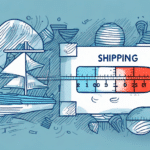How to Calculate FedEx Dimensional Weight for Your Shipments
Understanding dimensional weight is crucial for optimizing your shipping costs with FedEx. Dimensional weight is a pricing strategy that considers the size of a package rather than its actual weight, ensuring fair pricing based on the space your package occupies. This guide provides a comprehensive overview of calculating FedEx dimensional weight, its significance, and strategies to minimize shipping expenses.
Understanding Dimensional Weight and Its Importance
Traditionally, shipping costs were determined solely by the actual weight of a package. However, this method posed challenges for large but lightweight packages, leading to inefficiencies and financial losses for carriers. To address this, FedEx and other carriers adopted the dimensional weight pricing model, which accounts for the package's volume.
Dimensional weight is calculated by multiplying the package's length, width, and height and then dividing by a dimensional factor. For shipments within the U.S., FedEx uses a dimensional factor of 139, while international shipments use a factor of 166. If the dimensional weight surpasses the actual weight, FedEx charges based on the dimensional weight, ensuring that larger packages contribute fairly to shipping costs.
Calculating FedEx Dimensional Weight
Dimensional Weight Formula
FedEx employs the following formula to determine dimensional weight:
Dimensional Weight (kg) = (Length (cm) × Width (cm) × Height (cm)) / 5,000
To accurately calculate:
- Measure the length, width, and height of your package in centimeters.
- Multiply these three measurements together.
- Divide the result by 5,000 to obtain the dimensional weight in kilograms.
For more details, refer to FedEx Shipping Rates.
Factors Affecting Dimensional Weight
Package Dimensions and Shape
The size and shape of your package significantly impact its dimensional weight. Bulky or irregularly shaped packages occupy more space, leading to higher dimensional weights.
Packaging Materials
Using lightweight packaging materials like bubble wrap or air pillows can help reduce the overall volume of your package, thus lowering its dimensional weight.
Destination Considerations
Different regions or countries may have varying dimensional weight calculations. It's essential to verify the specific dimensional factors applicable to your shipment's destination.
Tips to Reduce Dimensional Weight and Shipping Costs
- Use Smaller Boxes: Opt for the smallest box that comfortably fits your items to minimize dimensional weight.
- Lightweight Packaging Materials: Utilize materials that provide protection without adding unnecessary bulk.
- Efficient Packing: Arrange products snugly to eliminate excess space within the package.
- Consolidate Shipments: Combine multiple items into a single shipment to reduce the number of packages.
Additionally, consider alternative shipping methods such as ground shipping or regional carriers to find more cost-effective options. Leveraging third-party logistics providers can also help in negotiating better rates and optimizing your shipping strategy.
Utilizing FedEx Online Tools
Manually calculating dimensional weight can be time-consuming. FedEx offers a suite of online tools to streamline this process:
Shipping Rate Calculator
Use the FedEx Shipping Rate Calculator to estimate shipping costs based on package dimensions and destination.
Package Dimensions Tool
The Package Dimensions Tool helps you determine the exact size of your package, ensuring accurate dimensional weight calculations.
Tracking and Management
FedEx's tracking tools allow you to monitor your shipments in real-time, providing visibility and enhancing customer satisfaction.
Common Mistakes to Avoid When Calculating Dimensional Weight
- Incorrect Measurements: Always measure at the package's widest points, including any protrusions.
- Rounding Errors: Round up all measurements to the nearest whole number to prevent underestimation.
- Using the Wrong Formula: Ensure you're using the correct dimensional weight formula for your shipment’s shape.
- Ignoring Packaging Materials: Account for all packaging materials in your measurements to ensure accuracy.
Avoiding these common pitfalls ensures that you are charged appropriately for your shipments and helps prevent unexpected fees.
Adjusting Your Packaging to Meet FedEx’s Requirements
Optimizing your packaging can significantly reduce dimensional weight and, consequently, shipping costs. Here are some strategies:
- Custom Packaging: Design packaging that fits your products perfectly, minimizing excess space.
- Use Void Fill Wisely: Employ materials like air pillows only where necessary to protect items without adding bulk.
- Evaluate Packaging Solutions: Regularly assess and update your packaging methods to align with FedEx’s guidelines.
For more insights, visit FedEx’s Packaging Guidelines.
The Impact of Dimensional Weight on Your Bottom Line
Accurately understanding and calculating dimensional weight is essential for managing shipping expenses effectively. By implementing the strategies outlined above, businesses can reduce shipping costs, enhance operational efficiency, and improve overall profitability. Staying informed about FedEx’s dimensional weight policies and utilizing available tools ensures that you remain competitive in the shipping landscape.






















